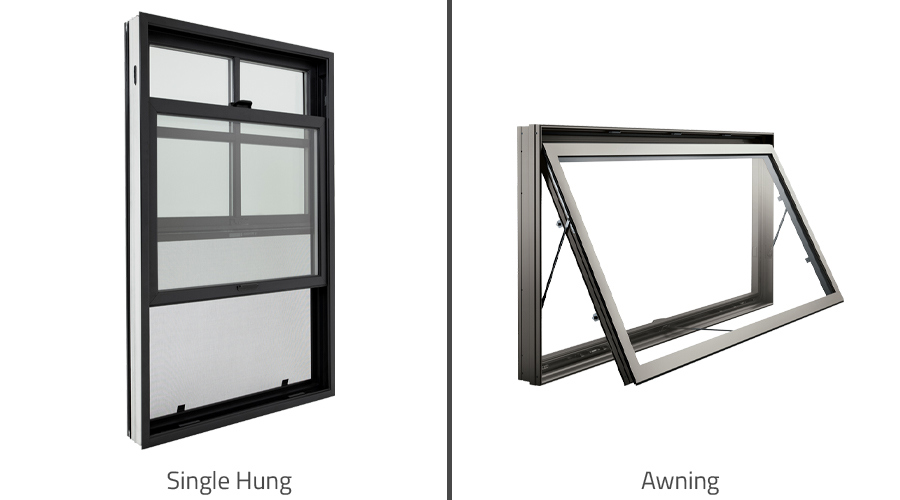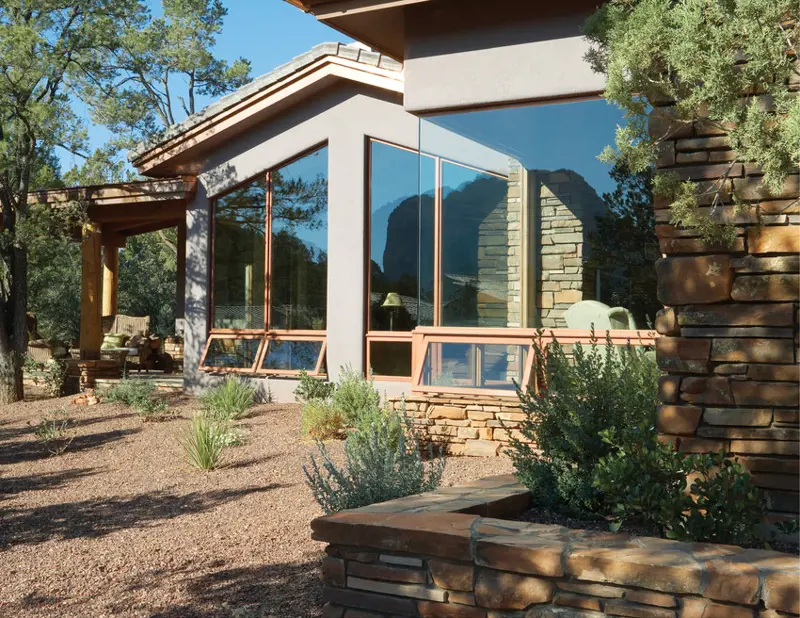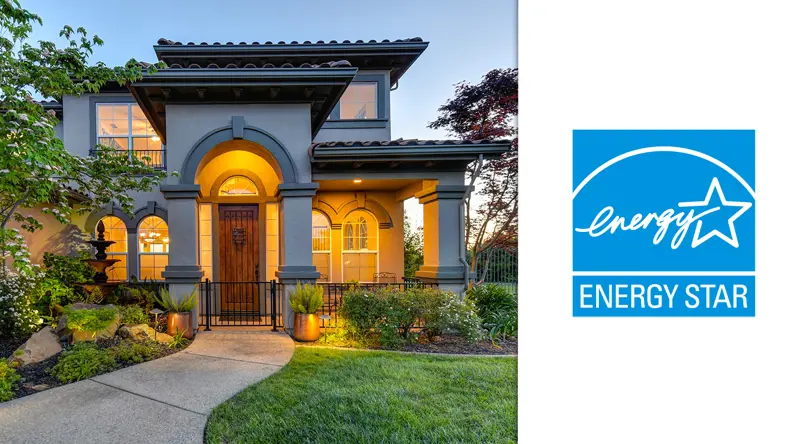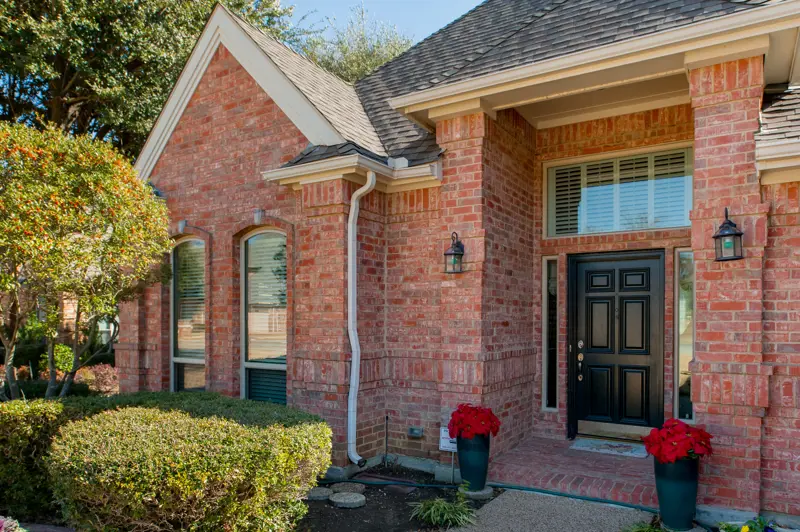
Are Single Hung Windows More Efficient Than Awning Windows?
Replacing windows in your home doesn't mean you have to stick with the same style that was there previously. Instead, evaluate your options and personal priorities before choosing. Two common options include single hung and awning styles. If you have the freedom to choose between the two it's helpful to understand the differences between each style especially as they compare in efficiency.
In this post we'll cover the following topics:
Use the links below to jump head
- Single hung windows vs awning windows
- Are single hung windows more energy efficient than awning windows?
- Should I get hung or awning windows for my home?
- Pros and cons of single hung windows
- Pros and cons of awning windows
Single-hung Windows vs. Awning Windows
Single-hung windows are a standard style of window in most modern U.S. homes. They are oriented vertically and have one moving part, a bottom panel (sash) that slides up and down to open smoothly after being unlocked. It reduces the moving parts and makes it more simplistic for the user. These can be found anywhere throughout a home as they offer a versatile design arrangement.
Awning windows are oriented more horizontally, being wider than they are tall. Most often, they open via a crank outwardly. They do this by hinging along the top and creating an awning shape as they move out. These are most commonly found in kitchens and bathrooms or paired with fixed picture windows.
Are Single-hung Windows More Energy Efficient Than Awning Windows?

Single-hung windows tend to be less energy efficient than awning windows. The reason for this is that they have higher leakage rates due to their inability to seal as tightly.
Another factor that aids the energy efficiency of an awning window is that they have fewer moving parts. Single-hung windows have an entire panel that moves against a fixed panel as well as a locking unit. Awning windows, once unlocked, move the whole, single panel via a crank. There is nothing else to seal against but the window's edge and the panel.
Should I Get Single-hung or Awning Windows for My Home?
Single-hung windows have remained one of the most popular choices for home builders since they allow for a great deal of design customization around them. However, if you want to make your home as energy-efficient as possible, having a window with more of an airtight seal will do the trick better than a single hung with its sliding sash.
Consult with a window expert to help you think of all the possibilities when possible. In the meantime, consider your options based on the pros and cons of both.
Single-hung Windows Pros & Cons
SH Pros:
- Their simple, classic operation makes them easy for any user.
- How they open gives more options for the amount of ventilation.
- They are highly affordable due to long-lasting popularity and demand.
- Single-hung windows fit into a wide variety of aesthetics and designs.
SH Cons:
- They are not as energy efficient as other window models, like awning windows. However, they do still meet the Energy Star code when paired with a high-performing glass package.
- Frequent cleaning is needed to keep their tracks from filling with dirt and prevent a tighter seal along the bottom.
- In windy climates like West Texas, fine particles of dust can find their way through the meeting rail.
Single-hung windows can work well anywhere in the home.
Choose single-hung windows if you are tight on space. These don't take up as much space and are a classic choice.
Awning Windows Pros & Cons
Awning Pros:
- They work well in higher areas.
- Awning style offers the opportunity for ventilation even during rainy weather.
- Their increased energy efficiency enhances household energy systems.
- Awning windows tend to be more weatherproof↗ since the sash of the window seals like a gasket once firmly closed. It limits movement so they don't rattle or react during windy, strong weather.
- They improve home security since they can only be opened by a hand-operated crank on the inside.
Awning Cons:
- They can protrude farther out into high traffic areas such as a porch or walkway.
- They are high maintenance due to the breakability of their cranking mechanism.
- Awning windows require more cleaning than traditional windows since they offer a linear space for things to land on.
- They do not offer an emergency escape.
Awning windows are most common in kitchens and bathrooms. Do not use them where they will push out onto areas of high traffic. They work well when placed up high, such as along the top edge of a picture window. Their use does not need to be restricted to these areas.
Choose awning windows if space is not an issue. Awning windows provide lots of ventilation and have a special aesthetic appeal.
If you are looking to increase your home's energy efficiency, it is worth considering adding in some awning windows. Both styles are modern and can suit the overall aesthetic of the home well.
Oops!
We don't currently serve your area but do want to help you plan your project. Try our Build & Price tool to get an idea of window & door costs within DFW. Your area may be higher or lower but at least you'll have some idea of the price.
Thanks for stopping by.







